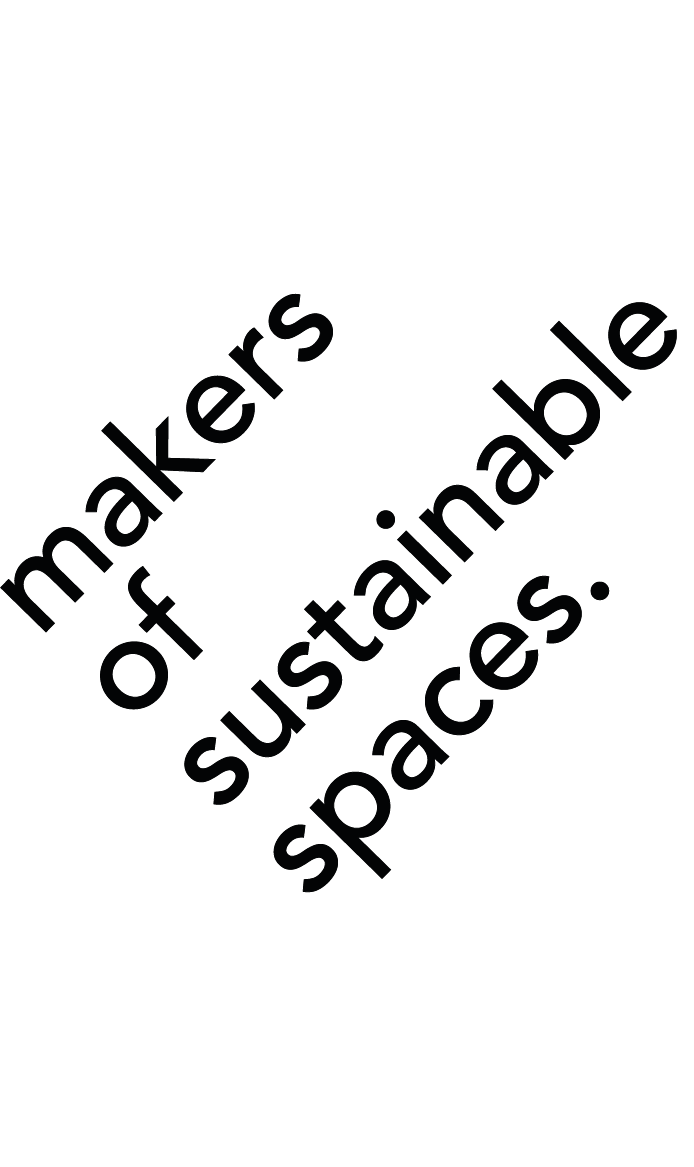25 Mar BEES. NATURE. ONE STORY by ALVEOLE x MOSS
by Tessel Pool in Collaboration with Alvéole
Our understanding of the complexity of nature is ever-evolving and we are quickly learning that a single plant does not have as much impact as an array of plants, complemented by a system of insects, bees and other fauna. Only when we grasp this can we start opening up such spaces for people. We need to move away from the outdated idea that green spaces are solely for a single organism; an ecosystem is not an ecosystem if only one component is present.
Alvéole, an urban beekeeping amenity, and Makers of Sustainable Spaces (MOSS), a leader in weaving nature into cities, came together to discuss and synergise their work on the premise that one without the other is incomplete. The discussion centered around how as practitioners and change-makers, we can enhance collaborations to facilitate a functioning ecosystem. This collaboration specifically symbolizes the holistic ideal of future green city environments.


[ALVEOLE Co-Founders | Etienne, Declan and Alex]
HOW IT STARTED
Alvéole started as an urban experiment carried out by co-founders, Alex, Declan and Etienne. They initially introduced a beehive into their back garden in Montreal as a personal experiment but soon learned it had become an experience, alluring curious neighbors to the hive. The trio noticed that the urban community was curious, eager to learn and had the intention of becoming more conscious, but they often lacked knowledge and were unsure of how to begin. The introduction of the beehive in the neighborhood presents many learning opportunities through a highly immersive experience. Alvéole developed from the curious minds of urbanites and three eager founders keen to continue educating the community.
“We realized people were intrigued, curious of what was going on inside the hive. We understood that cities are curious to learn, want to be aware of what’s unusual, what’s out there.”
– Etienne
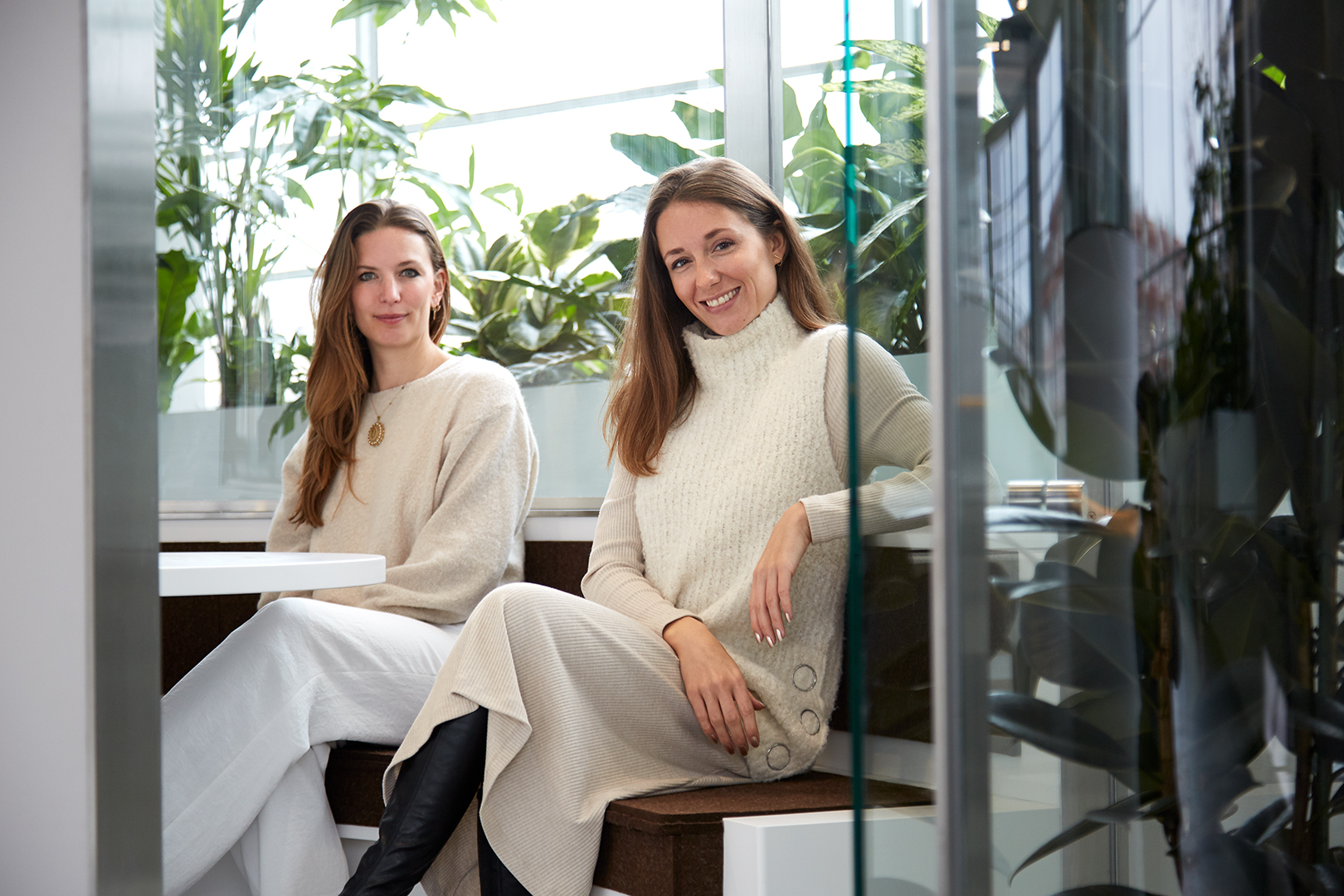

[The co-founders of MOSS, Nina and Tessa from left to right]
“Let’s design the future we want to live in.”
– Tessa
THE ECOSYSTEM: RECONNECTING PEOPLE WITH NATURE
It is the responsibility of green designers, bee specialists, and advocates of change with a vision for sustainable cities, to provide spaces for all living beings to coexist. Without it, there would be no pollination and without pollination, there is no life. The shared goal of Alvéole and MOSS is to reconnect people and plants with nature by creating green urban ecosystems that are sustained through symbiotic and diverse natural systems. This is achieved by creating spaces that attract both people and all other forms of wildlife. This approach has an impact on what we define as four key urban pillars including: people, business, building and our cities.
PEOPLE
In order to create healthy green ecosystems, we need to design healthy spaces for people to coexist with flora and fauna. As primary users of these envisioned spaces, we are responsible for creating healthier, more diversified and immersive environments for everyone to live in and experience on a daily basis. The findings recognise the benefits and are based on data-driven knowledge that analyze the impact of plants on both interior and exterior spaces. Many studies provide evidence for this including the well-known research paper Human Spaces: The Global Impact of Biophilic Design in the Workplace carried out by Robertson Cooper, which looks at how reconnecting people to nature in the built environment improves well-being and productivity and that biophilic design has a strong and measurable impact on the workforce. According to this study, workers exposed to nature in their daily work lives report a 15% higher level of well-being, are 6% more productive, and are 15% more creative. Similarly, MOSS recently carried out a scientific study in collaboration with the University of Wageningen referred to as MOSS LAB 1.0 which studied the large-scale effect of plants on interior spaces, revealing that with the majority of our time spent indoors, plants impact people’s productivity, blood pressure and heart rate amongst various other things like workplace satisfaction. MOSS LAB will carry out a second chapter in collaboration with the University of Wageningen and the green Installation and maintenance expert company called De Koninklijke Ginkel Groep to study the impact of plants on acoustics and sound, which specifically unpacks the influence of plant life on office spaces and user well-being, which in turn has a great effect on people’s experience of a green space.
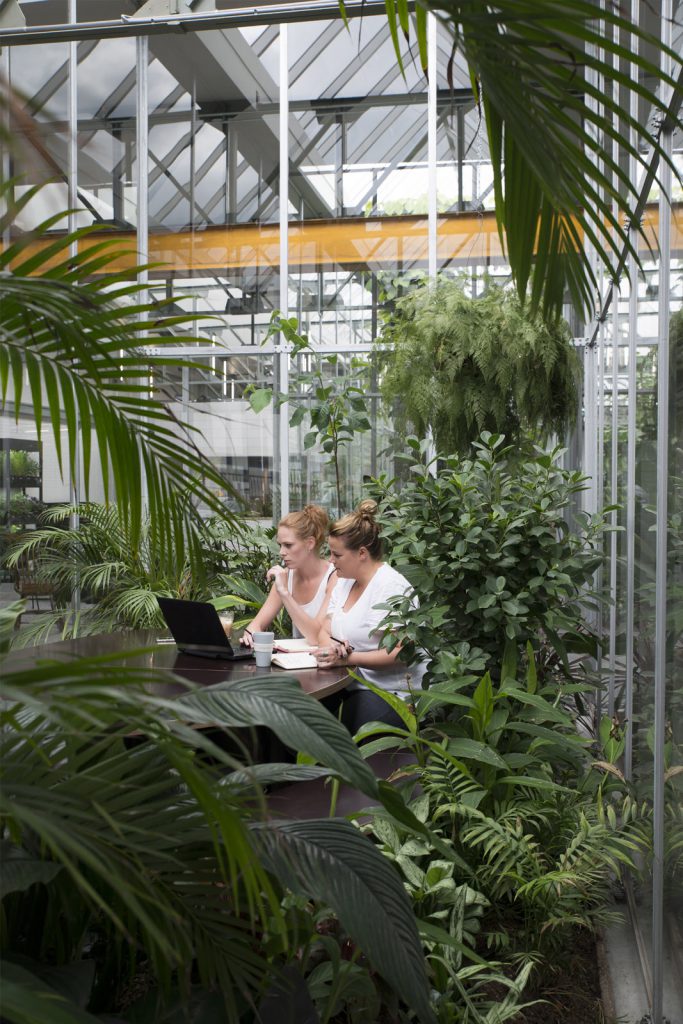

[MOSS project | Collaborative workplaces at the JOOLZ]
At Alvéole, the focus lies in the connection between people and nature. Through technology and human experiences, they offer multiple touchpoints with nature to activate one’s senses. Their dedicated web-app, My Hive, provides insight into the entire process from the installation phase, inspection, team building activities through to honey harvesting. Unfortunately, there is often a negative association with bees because they are still largely undiscovered. Alvéole places much emphasis on shifting this fear to a more positive emotion through a short educational experience, allowing individuals to become more open to something they would not believe they would otherwise ever see. Etienne described bees to be “like a small society, they are very relatable. That’s why people can feel deep emotion, a deep connection to them. Alvéole’s ultimate objective is to share the intrinsic experience of nature through bees but how does one share an experience without having experienced it previously? The key is to make the experience visual in order to evoke an emotional connection and understanding. This can also be perceived as the awareness phase which entails disclosing less information but showing the process, thus evoking a deeper emotion for people. Both Alvéole and MOSS have noticed that enhancing people’s awareness is very difficult and Alvéole’s strategy is to activate an apt sales team to engage with the general public to explain the unexpected. Etienne illustrates this by adding “to raise awareness for a certain problem, you need to make it visible to people. Make them use their senses.”
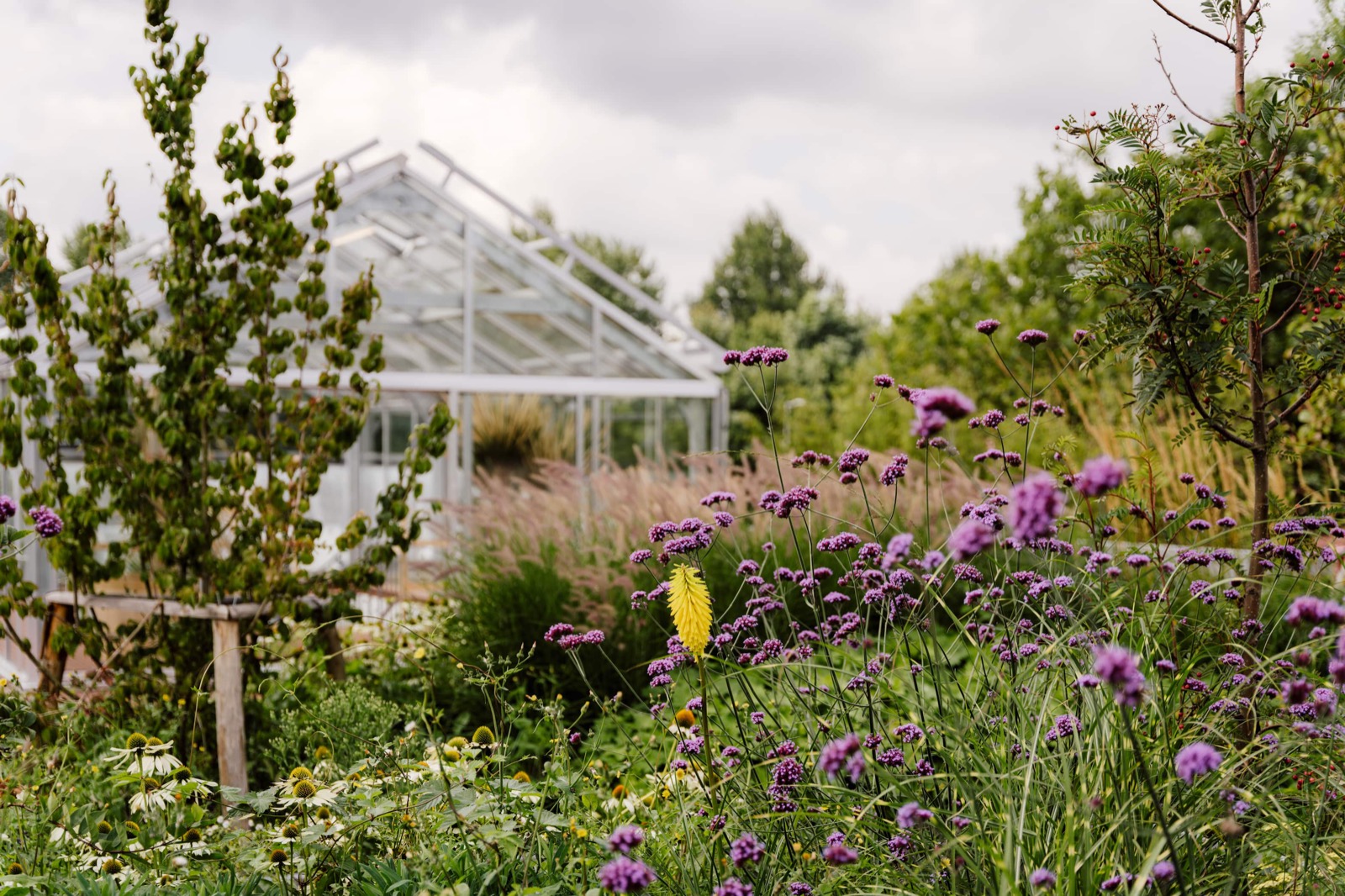



Engagement is also highly important in order to educate people about the importance of nature. Engagement can be carried out by connecting people as a result of the MOSS projects, or through an interactive event that activates your senses like at Alvéole. Engagement can look different to achieve the same objectives but both parties acknowledge the drive for connection in the output of their work.
“We need to tackle and find collaborations between partners whom we trust, but also with owners of buildings and employers. We need to make it one story. You can’t have one without the others.”
-Tessa
BUSINESS
Both Alvéole and MOSS alike express very high economic benefits for businesses as a result of the positive impact their services have on people, employees and tenants. According to research, implementing nature into both interior and exterior spaces creates an amenity or building service, which equates to a higher Return On Investments (ROI) for business owners and thus also the developers. Additionally, there is an increase in perceived physical and mental well-being for users of the space increasing overall retention and resulting in less sick days. Lastly, creativity is heightened when in nature as a result of the relaxed human brain.
There has been an apparent shift in user behaviour as a result of the Covid-19 pandemic and employees are working from home more regularly, which has become a familiar environment for many. As a result, the perspectives of developers and business owners have also evolved as they have acquired a deeper understanding of the importance of creating healthier work environments; currently there is a deeper need to encourage people to go back to the office. Thus, employers have to gain ground to create new versions of the workspace we once knew. In a post-pandemic urban environment, companies now understand the effect of immersive spaces by integrating green in the space and it has become much more than merely introducing a single plant but rather looking at ways to enhance contact with nature and creating entire ecosystems. The economic benefits of enhancing nature increases the Return On Investment through productivity, creativity and well-being


[ALVEOLE project | Team building activity on the rooftop of a building]
BUILDING ENVIRONMENT
The built form is closely linked to business, as thriving businesses’, employee presence and engagement in an office environment affect the quality of the built environment. Both developers and business owners have to express a level of creativity in order to retain their tenants and employees, which in turn also has direct benefits for property managers and building owners. In order to create highly enriching buildings, we should shift away from the conventional use of both indoor and outdoor spaces by optimising unused and unkept areas of a building such as the areas directly surrounding a building or what is often referred to as the fifth and unused facade, also known as the roof. These spaces often lie dormant but provide additional square meters in and around buildings, opening up new possibilities for innovation and an opportunity to integrate nature and biodiversity The benefits of green roofs are that they provide insulation for buildings and the benefit of creating green ecosystems around the building create opportunities for people to immerse themselves in nature. Optimising unused spaces creates opportunities to enhance natural changes in seasonality, insects and provide opportunities to experience much diversity in a single space. Etienne from Alvéole explains that this is why adding bees to this new space is such a wonderful way to complete the immersion and really connect not only with nature, but with each other.” Another important value for properties is sustainability and managers often have sustainability targets in mind and such biophilic projects make them more achievable. Building certification is also very important to ensure there is a standard for meeting sustainability requirements.


[ALVEOLE project | Beekeepers on duty]
CITY
Both Alvéole and MOSS see the impact of a multi-scalar approach when it comes to integrating nature and recognising that the most benefits would be achieved at the city-scale. Re-introducing all types of nature into the built environment has a significant impact on mitigating the urban heath effect by cooling down buildings. Additionally, the closer the design mimics a multi-layered natural ecosystem, the more benefits we experience. Nature additionally acts as a water buffer allowing water storage or opportunities for reuse which also functions as a smart flow system between the natural hydrological cycle and the built environment.The Max & Moore project by MOSS in collaboration with Mei Architects, Being Development and COD illustrates this concept well. The project in question is a newly constructed 9,800 m2 office complex on the Asterweg in the Buiksloterham district of Amsterdam Noord. The green design by MOSS is based on biophilic design principles and characterized by three main green typologies: biodiverse green roofs with native species, climbing walls for local and seasonal flora, and lush patios. The space increased not only the overall quality of the building but also the level of biodiversity, irrespective of the space partly being situated in the interior of a building. It is important to increase nature at all costs.
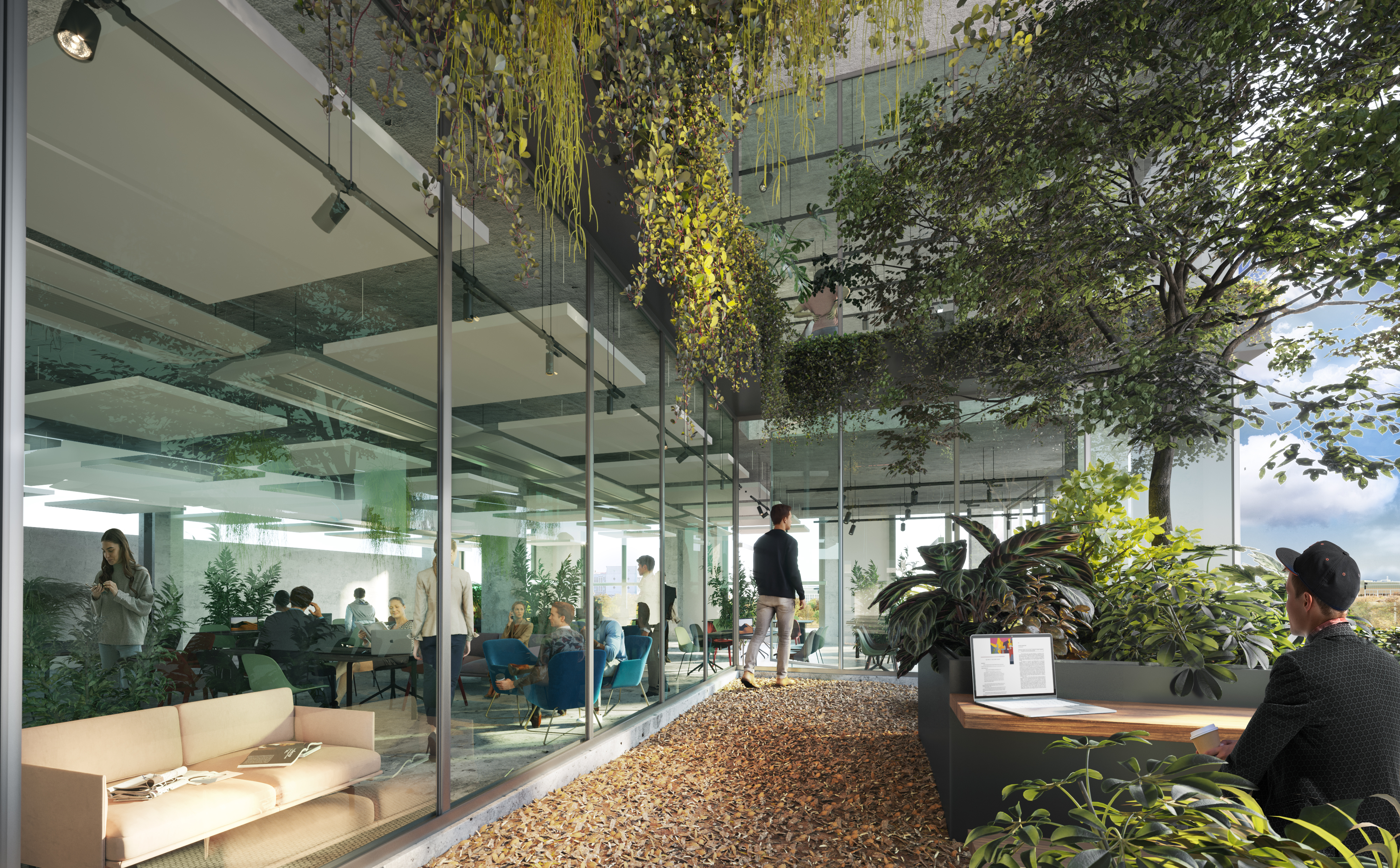

[MOSS project | Max & Moore]
To elicit this point further, we should mention that Alvéole is designing a new package that will offer an impact overview report that will include a social impact overview on tenant engagement and an environmental assessment that will provide data on the colonies health, including the quality of their food. This will be done through honey bees, pollen and honey analysis throughout the year. As practitioners, it is our responsibility to create habitats that are less susceptible to the threats of the urban environment because often they will not survive without a flowering system that is always blooming.
Our City: Amsterdam
Both the Alvéole team and the MOSS team have the advantage of practicing their vision in such a forward-thinking city like Amsterdam. In the city everything is created by choice, by communities, which puts people at the forefront of the design but now the challenge is to make it more nature-focussed and create sustainable urban ecosystems.
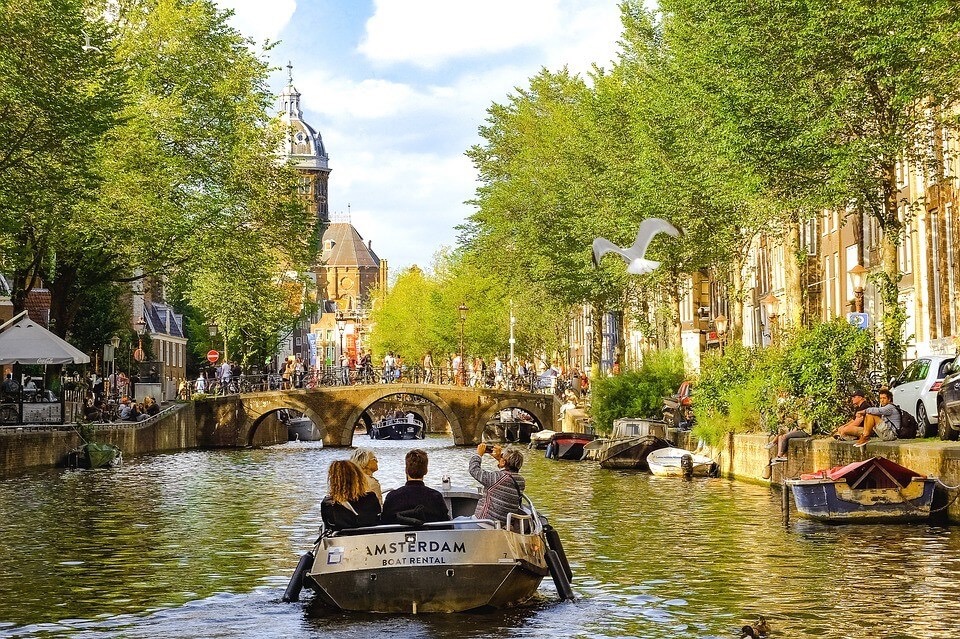

[Nature in Amsterdam]
CONCLUSION
One of the most important takeaways from the interview between Alvéole and MOSS is the agreement that humans have the agency to shape our future cities in a way that is beneficial for people, animals and nature alike. Its success has been proven and so we need to rethink our way of building cities by reducing car-centricity and implementing more walkways for example. What will however have the most significant impact is not merely implementing one tree but creating an entire ecosystem of trees. The vision for this partnership is essentially to have an input on the decision making process in the urban environment when it comes to plant types, as these decisions should specifically assist pollinators to thrive. The type of plants chosen should also align with the spatial concept keeping bees at the forefront of the design. There should be a deeper synergy between plant life and biodiversity, bees in particular. The role MOSS plays in facilitating real change is by having control over the type of plants, which have significant impact on the output of the space in question and as Tessa describes “It is not a question of capability of going towards creating the vision, it’s a question of being willing to put money and time in our future.” In this regard, MOSS can also influence making the green spaces more bee friendly. Alvéole on the other hand looks at how the newly designed space can use urban beekeeping to have a positive impact on the flowers and plants surrounding the building. Etienne suggests that “to create change, you have to be able to connect with people, link to their emotions. Make them aware of the impact they can all have on the future of our cities.”
